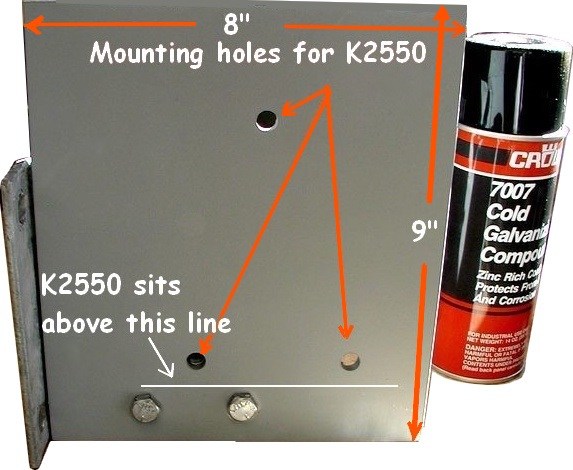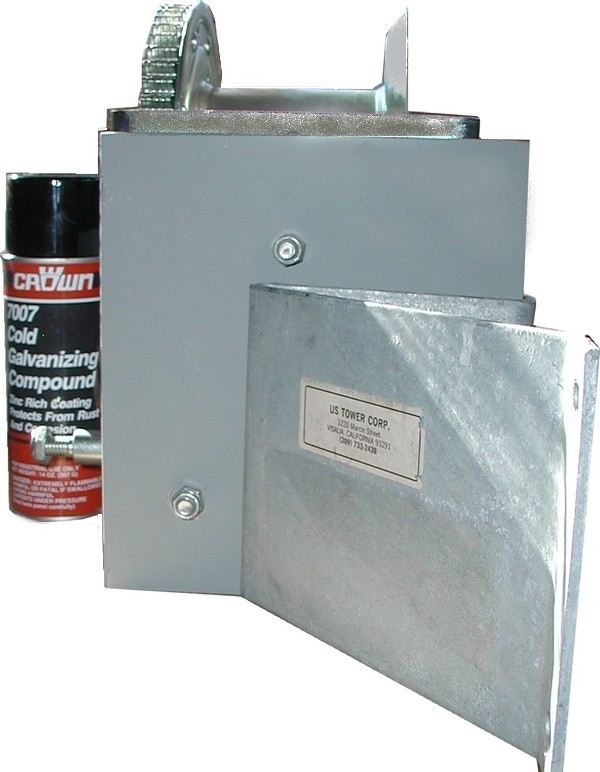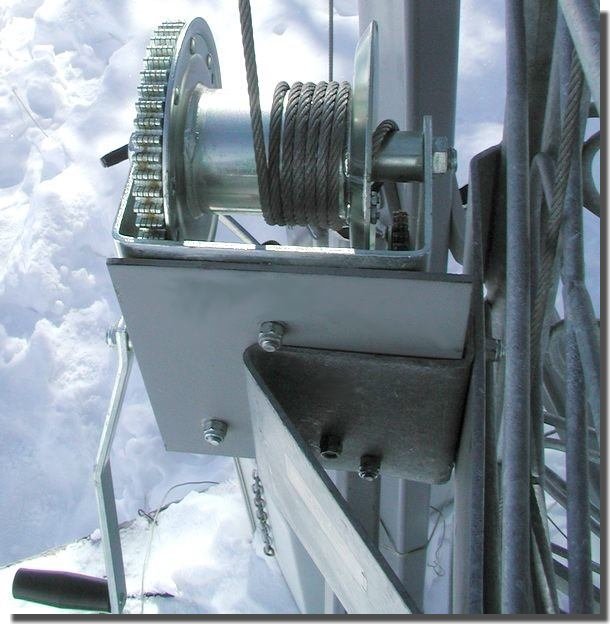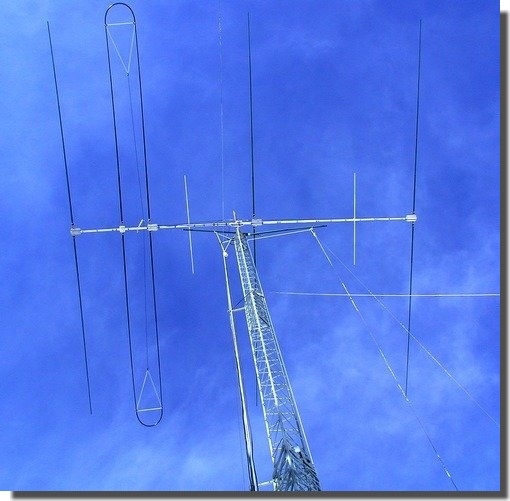After owning a US Tower TX-455 crank-up/tilt-over tower for a few years, I got tired of the effort it took cranking the Fulton K1550 winch to raise and lower the beast.
I recently helped a friend install a US Tower TX-472 that used the Fulton K2550 winch, and was impressed at the comparative ease with which the tower went up. That
helped me make up my mind. I ordered a Fulton K2550.
 I checked lots of discussion on various forums, such as Tower Talk, and others had made the conversion to the K2550. It seemed to be a simple swap. Others said that the
bolt holes on the tower bracket needed to be enlarged slightly. They must have had a different bracket than mine.
I checked lots of discussion on various forums, such as Tower Talk, and others had made the conversion to the K2550. It seemed to be a simple swap. Others said that the
bolt holes on the tower bracket needed to be enlarged slightly. They must have had a different bracket than mine.
Of course, being from Alaska, I had to put the winch on in the middle of our Rocky Mountain winter, with overnight temperatures running around -15 to -20 F. That's cold. The
metal sucks the heat out of your fingers in a second. After dragging the new Fulton K2550 out to the tower, removing the K1550, and holding the new winch up to the bracket,
it was obvious that I would need an alternate plan.
The image below demonstrates the impressive stature of the K2550 winch (right), compared to the old K1550 (left), and the bracket that mounts on the US Towers TX-455.

I searched the internet to see if I could find out how others had made this swap, and found little in the way of guidance. So, I decided to venture off on my
own. I have a decent workshop, and those college courses in engineering and metal working all those years ago were about to pay off!
After measuring to see if the holes would somehow magically align, I found out that would just not happen. A gear on the new K2550 would hit the top of a nearby bolt. The
next solution was to buy a 1/4 inch piece of steel that was 8" by 9" in size. A friendly metal shop I had dealt with in the past had what I needed - and the
price was $4. Good investment.
The image below demonstrates that the size of the adapter plate is more in fitting with the size of the mount on the K2550. Not to worry about the rusty appearance. There is
a cure.

I used a wire brush to clean most of the rust off, then used Tri-Sodium Phosphate (TSP, easily found at any hardware store) to clean it even further. A little warm water, a
wire brush, and the TSP took care of getting the plate clean. I sprayed it with a cold galvanzing paint (Crown 7007, Cold Galvanizing Compound) to ensure it would not rust,
or have a chemical reaction with the mounting bracket or K2550.

The next step was to drill the appropriate holes for 1) the new plate to fit the pre-existing holes of the US Tower mounting bracket; and, 2) the holes necessary for the new
Fulton K2550 to bolt to the adapter plate and tower bracket without interference from the other bolts. Rather than give precise measurements, I suggest that you carefully
mark where the holes should be, then drill them. Details may vary. Note that the K2550 sits above the two bolts holding the adapter plate to the TX-455 bracket.

OK - the next (and almost last) step was to wade through the snow, take the assembled K2550 and mounting bracket out to the tower, and bolt it in place with the four
bolts that held the bracket originally. As you can see from the remnants of the 3 feet of snow we recently had, it was much easier to work on the winch in a nice,
warm garage workshop!

The LAST step - and now much easier to do - is to crank up the tower! It works like a champ, and the effort is much reduced. My next projects are 1) to see about
creating an adapter that will fit where the winch handle mounts, and then use my 1/2 inch drill to crank the tower up and down - a poor man's motorized tower; and 2)
install a "TiltPlate" (NN4ZZ's marvelous creation) to be able to lower the tower and work on the SteppIR and other antennas with them in a horizontal position at
ground level.

The effort it takes to crank up the tower with the new K2550 is so low that I can do it with one hand, rather then the two-fisted approach required with the Fulton
K1550. A decent sized electric drill could do the work. I'm very happy with the results! I also vow that the next project will be undertaken in the summer and without having
to wade through knee deep snow!
I hope that this demonstrates that it can be done, with a minimal amount of effort, and with the only "specialized" tool being a bench drill press and a good set of drill bits
(thanks to Deb, my XYL, who gave them to me as a gift!).
Good luck with your project, and 73!
Joe
WDØM



 I checked lots of discussion on various forums, such as Tower Talk, and others had made the conversion to the K2550. It seemed to be a simple swap. Others said that the
bolt holes on the tower bracket needed to be enlarged slightly. They must have had a different bracket than mine.
I checked lots of discussion on various forums, such as Tower Talk, and others had made the conversion to the K2550. It seemed to be a simple swap. Others said that the
bolt holes on the tower bracket needed to be enlarged slightly. They must have had a different bracket than mine.





